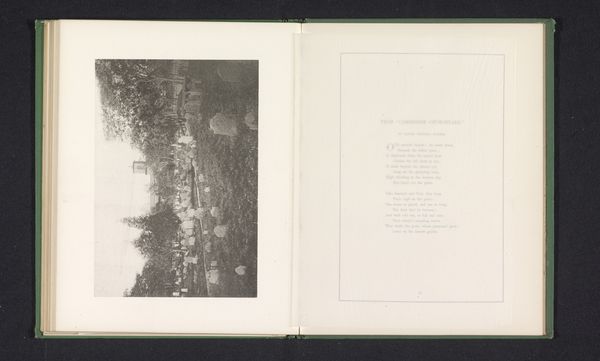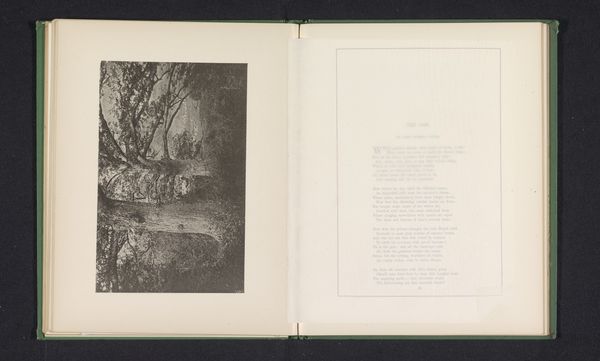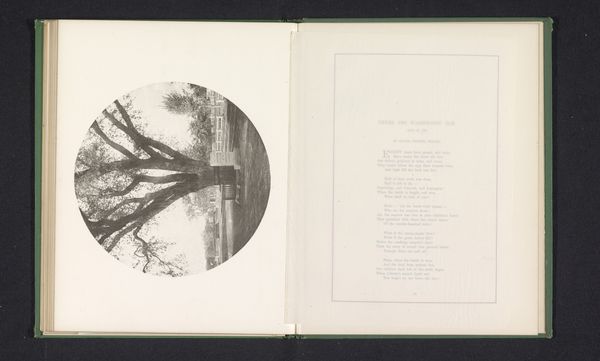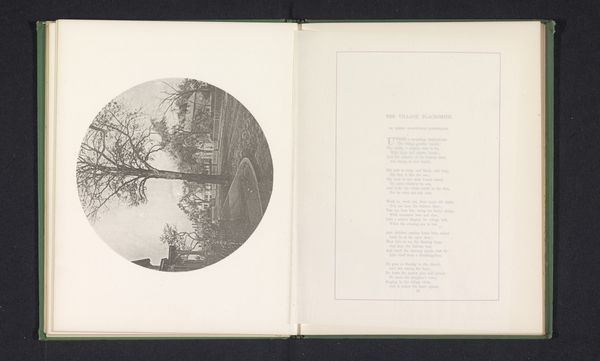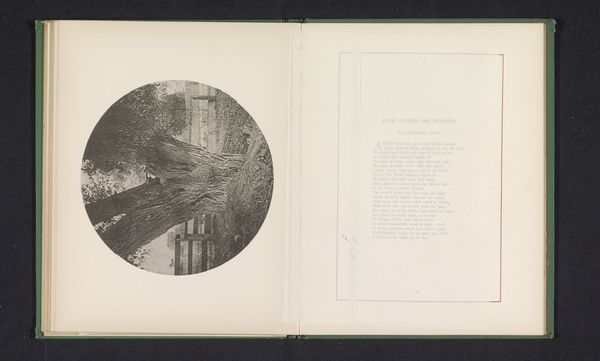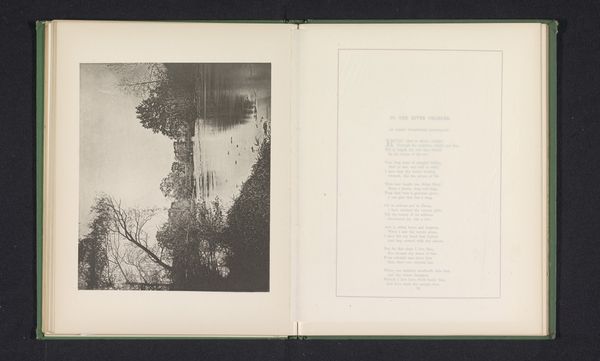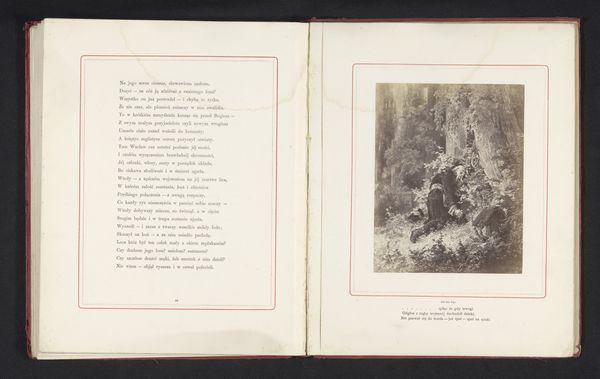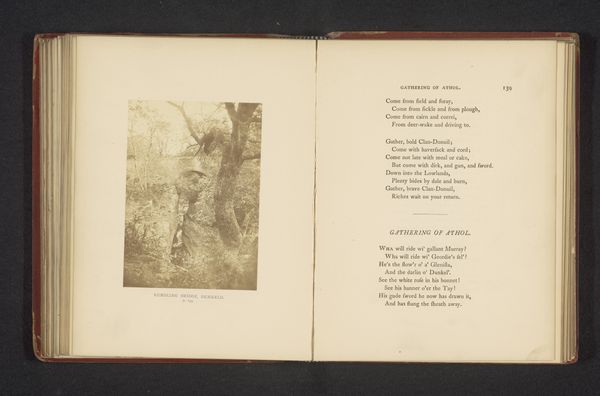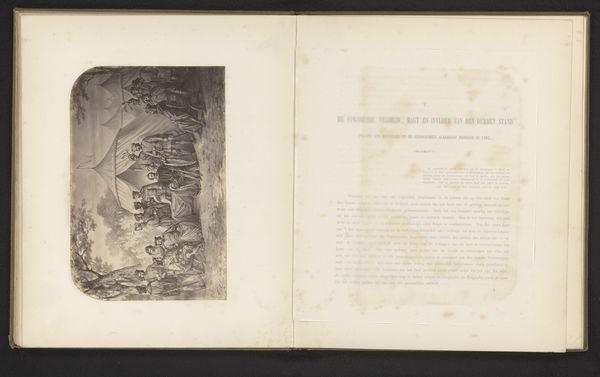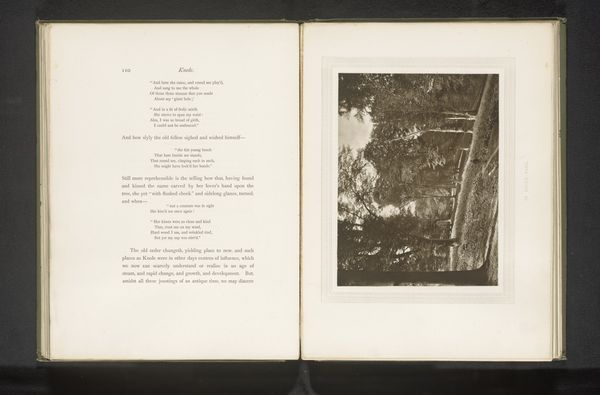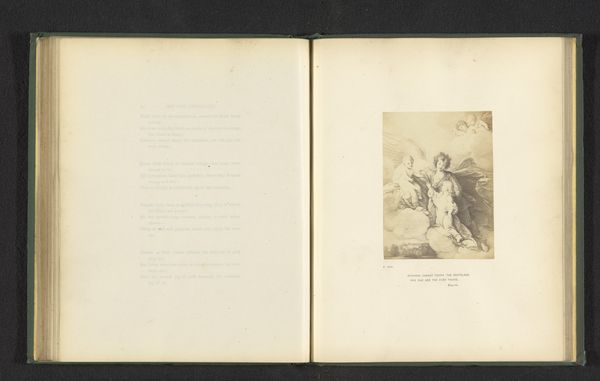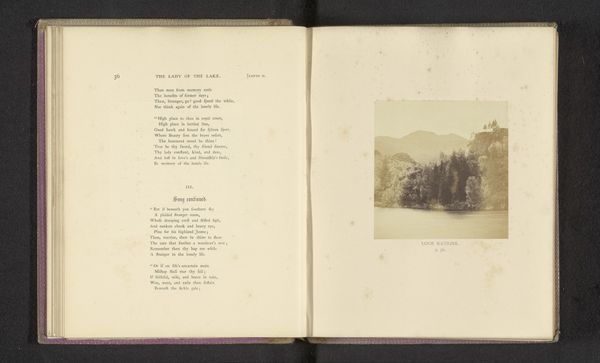
print, photography
#
tree
#
aged paper
#
homemade paper
#
paperlike
# print
#
landscape
#
personal journal design
#
paper texture
#
photography
#
thick font
#
white font
#
delicate typography
#
thin font
#
small font
Dimensions: height 151 mm, width 151 mm
Copyright: Rijks Museum: Open Domain
Editor: This is William James Stillman’s "Beek te Massachusetts," from before 1876, a photograph presented as a print in a book format. It’s fascinating how the image is contained within a circle, like looking through a telescope, contrasted with a page of text. What stands out to you? Curator: The handmade paper itself becomes crucial here. The texture, the very fibers—these speak of labor and process. It elevates what could be seen as simple reproduction to something that values the tactile and the crafted, going against the grain of industrial photography. Why juxtapose image with text in this way, particularly given the era’s emphasis on mass printing? Editor: I see it! So it is not just about representing a scene, but about a kind of... artistic labor itself? Curator: Precisely. The labor of making the paper, carefully printing the photograph, meticulously typesetting the poem. Are these efforts simply to reproduce nature? Or are they creating value through these acts? The choice of typography becomes crucial—is it mass-produced, functional, or something more… bespoke? Editor: I hadn’t considered the font choice playing such a big role! It seems so subtle. Do you think this challenges conventional ideas around landscape photography at the time? Curator: Absolutely. It forces us to question the value and labor embedded in both photography and poetry. This "landscape" becomes a site of production, of conscious choices regarding materials and the process of artistic creation. A traditional photo asks the viewer to contemplate a moment; Stillman's art asks you to consider its making. Editor: That changes how I see the entire piece! Thank you; considering it through the lens of materiality really opened it up for me. Curator: My pleasure. Thinking about art through the means of production often reveals the artist’s intentions more vividly than mere iconographic study alone.
Comments
No comments
Be the first to comment and join the conversation on the ultimate creative platform.
